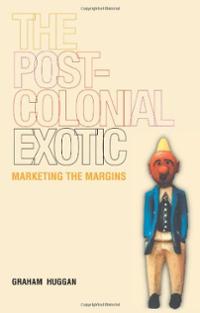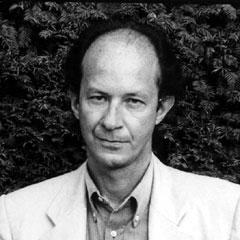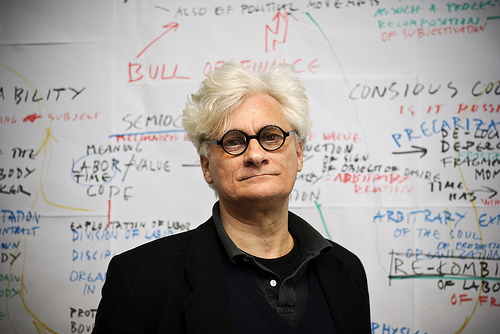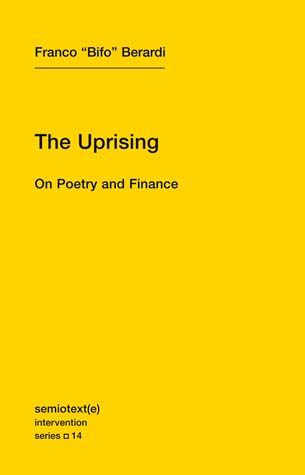Category: Reading Group
The first meeting of the Contemporaries reading group will take place on FRIDAY 6th NOVEMBER at 1pm in the Faculty, GR.03 We will be discussing Robert Eaglestone's 2013 essay 'Contemporary fiction in the academy: towards a manifesto'. A link to the essay is available on the Contemporaries Moodle page. All welcome; bring your lunch!
‘[P]ostcolonial is a word on everyone’s lips, even if no one seems to know what it means’
– Graham Huggan (The Postcolonial Exotic, p. 1)
 I put forward Huggan’s introduction to the Postcolonial Exotic with the most abjectly selfish intentions. The Contemporaries research group is, at its heart, an eclectic collection of readers who all work on a body of authors creating literature in the same time period but who are all up to fairly different things. I wondered how the group would respond to the opening of a work that caused a fairly wide ripple in the pool of postcolonial studies but seems not to have touched any other sub-disciplines; how we would go about discussing a text whose ideas have spectacularly wide-reading implications but which positions itself, immediately, as only about this hard to define thing dubbed the ‘postcolonial’.
I put forward Huggan’s introduction to the Postcolonial Exotic with the most abjectly selfish intentions. The Contemporaries research group is, at its heart, an eclectic collection of readers who all work on a body of authors creating literature in the same time period but who are all up to fairly different things. I wondered how the group would respond to the opening of a work that caused a fairly wide ripple in the pool of postcolonial studies but seems not to have touched any other sub-disciplines; how we would go about discussing a text whose ideas have spectacularly wide-reading implications but which positions itself, immediately, as only about this hard to define thing dubbed the ‘postcolonial’.
Huggan’s book is, in the main, about the commodification of cultural difference. It argues that postcolonial authors, broadly those who write about or on behalf of the developing world, exist in an international literary market whose mainstream readers use their texts like tourists use foreign spaces: in search of the exotic. For Huggan,
‘the exotic is not, as is often supposed, an inherent quality to be found ‘in’ certain people, distinctive objects, or specific places; exoticism describes, rather, a particular mode of aesthetic perception – one which renders people, objects and places strange even as it domesticates them . . . Exoticism, in this context, might be described as a kind of semiotic circuit that oscillates between the opposite poles of strangeness and familiarity’ (p. 13).
Thus postcolonial writers are exoticised – made different and marketed for their difference in a way that acts to subordinate and control their products and the people and places they represent.
Our conversation, as I remember it, mainly assessed Huggan’s argument and clarified his claims. At least one participant asked why the text made such a splash – and how and why Huggan’s presentation of these contentions restricted itself to the postcolonial sphere – surely all authors’ objects are similarly ‘exoticised’? Of the things we touched upon the most productive aspect of the conversation dwelled on Huggan’s unspoken indictment of all English academics focused on the contemporary (if not ‘all’ full stop). If we follow his argument to its logical limit, in some sense all of our practice acts to domesticate the strange – our whole function is to select texts that help us to condense peoples, periods, preoccupations and affects into single sentences or bodies of works or pithy lines. We distil complex texts, in conjunction with marketers, agents and editors, into syllabus-fitting and often singular concepts. The biggest question raised, one we couldn’t quite fully cover, was: How do we not commodify?
‘Of whom and of what are we contemporaries? What does it mean to be contemporary?’
James Riley introduced Giorgio Agamben’s “What Is the Contemporary?” from What is an Apparatus? and Other Essays, trans. David Kishik and Stefan Pedatella (Stanford University Press, 2009):
Agamben interprets the contemporary as an experience of profound dissonance:
‘Contemporariness is, then, a singular relationship with one’s own time, which adheres to it and, at the same time, keeps a distance from it. More precisely, it is that relationship with time that adheres to it, through a disjunction and an anachronism.’
Such a quote reminds us of the frequent elision that occurs between the conceptualisation of the ‘modern’ and the categorization of the ‘contemporary’. The terms are not synonyms. To be ‘contemporary’ is to experience a state of proximity with one’s temporality. In his discussion, Agamben attempts to articulate the idea that the contemporary is an ahistorical concept; not a label of periodization, but an existential marker. This perspective foregrounds the critical importance of context and re-contextualisation when forming and understanding of ‘contemporary literature’. For Agamben, the mode of thought that this position demands is one that involves an integral epistemological difficulty:
The contemporary is he who firmly holds his gaze on his own time so as to perceive not its light, but rather its darkness. All eras, for those who experience contemporariness, are obscure. The contemporary is precisely the person who knows how to see this obscurity, who is able to write by dipping his pen in the obscurity of the present.
Contemporaneity as the perception of darkness. Agamben’s language is not without its own rhetorical obscurity at this point, but for a dramatization of the perspective he outlines we might look to Heart of Darkness. Historically it is a ‘modern’ novel but in its particular incorporation of narration, proximity and obscurity it encapsulates and also speaks from a point of con / temporal extimacy.
 Kasia Boddy introduced ‘The Theory Generation’ by Nicholas Dames, which appeared in n+1 in October 2012 and which begins:
Kasia Boddy introduced ‘The Theory Generation’ by Nicholas Dames, which appeared in n+1 in October 2012 and which begins:
‘If you studied the liberal arts in an American college anytime after 1980, you were likely exposed to what is universally called Theory. Perhaps you still possess some recognizable talismans: that copy of The Foucault Reader, with the master’s bald head and piercing eyes emblematic of pure intellection; A Thousand Plateaus with its Escher-lite line-drawing promising the thrills of disorientation; the stark, sickly-gray spine of Adorno’s Negative Dialectics; a stack of little Semiotext(e) volumes bought over time from the now-defunct video rental place. Maybe they still carry a faint whiff of rebellion or awakening, or (at least) late-adolescent disaffection. Maybe they evoke shame (for having lost touch with them, or having never really read them); maybe they evoke disdain (for their preciousness, or their inability to solve tedious adult dilemmas); maybe they’re mute. But chances are that, of those studies, they are what remain. And you can walk into the homes of friends and experience the recognition, wanly amusing or embarrassing, of finding the very same books. If so, you belong to what might be called the Theory Generation; and it has recently become evident that some of its members have been thinking back on their training.’
Dames goes on to discuss the influence of an education (or cult initiation) in big-T Theory during ‘the long 1980s’ on the likes of Jennifer Egan, Jeffrey Eugenides, Ben Lerner, Sam Lipstye and Lorrie Moore. Their novels, he argues, are ‘peculiar novels of ideas’ in which realism ultimately ‘has its revenge’ on a particulalrly rarified academic education. And yet that education retains some value, he concludes: ‘it habituates you to the anomic, precarious existence you were destined to lead in any case. It was like a drug after all: not hallucinogenic or mind-expanding, but rather pleasantly sedating.’


